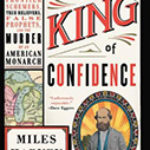The Hollywood Kid: The Violent Life And Violent Death Of An Ms-13 Hitman

Authors: Óscar Martinez and Juan José Martinez, John B. Washington (Translator), Daniela Maria Ugaz (Translator)
Publisher: London, New York: Verso, 2019. 320p.
Reviewers: Britta Crandall and Russell Crandall | August 2021
Mara Salvatrucha 13, a.k.a. MS-13 is one of the world’s largest and most heinous gangs in the world. Notably, it earned the dubious distinction of being the only street gang to be labeled a ‘transnational criminal organization’ by the U.S. Treasury. The gang’s destruction and despair has been most acute in the so-called Northern Triangle of Central America (Guatemala, Honduras, El Salvador), making these countries some of the world’s most violent and deadly countries. Take El Salvador, where in 2015 its murder rate was 103/100,000 residents, compared to 18 in Mexico and 5 in the United States.
Salvadoran sibling writers Óscar Martínez and Juan José Martínez explore this crisis in their wrenching yet vital tome, The Hollywood Kid. Óscar, a journalist at the Salvadoran daily El Faro, is the author of the award-winning The Beast (his chronicle of “riding the rails and dodging narcos on the migrant trail”), while Juan José is a cultural anthropologist who has studied gangs for over a decade. Between them, they have spent years talking to dozens if not hundreds of MS-13 members, mortal enemies, and their victims. They even spent time (pun intended) with members in “inhuman” prisons in their native El Salvador, but also Honduras, Guatemala, Mexico, and the United States.
All of this preparation, dedication, and of course fearlessness is what gives the Martínez brothers unparalleled credibility in following the life of a MS-13 hitman (sicario), Miguel Ángel Tobar, or The Hollywood Kid (El Niño Hollywood). Expecting the quintessential head-shaved, tattoo-festooned marero (gang banger) when they first came across “Hollywood” in his western El Salvador stomping grounds, they struck up a conversation with an unexpectedly loquacious gang member with over fifty “hits” to his name. They followed his story over the next three years until his grisly murder, at age 30, by the hands of MS-13 members who believed (correctly as he was a key witness in trials that sent 30 MS-13istas to prison) Hollywood had betrayed them. This “thin, slant-eyed young man wearing a large t-shirt and a Rastafarian hat” proceeded to answer every question the two investigators posed to him. Before long, the authors came to trust Tobar as he consistently told the truth, even if he could not even properly pronounce his own alias (saying “Haleewoo”). Impossibly, in one instance, Hollywood hiked for multiple hours through “enemy territory” (read, enemy gangs) to sit down with the authors. Part of what won the authors over was that his tales of mass murders, massive drug deals, and the like, were corroborated by coroners, cops, nurses, and prison guards.
Óscar and Juan José eventually came to the unexpected conclusion that Tobar’s agency had always been constricted, “always tied to distant decisions made by US and Salvadoran politicians.” Later in the book, the authors expand on how the so-called policy blowback of Cold War-era U.S. presidential administrations (namely, Ronald Reagan’s tenure) helped pave the way for the unspeakable violence of the current era. The authors want us to see that Tobar’s criminality was real, but only understood in the broader context of a “semi-orphaned youth” born into a country at the height of a ferocious (and U.S. backed) internal war.
Britta Crandall and Russell Crandall, Professors of Latin American Studies, Davidson College


